Displaying collections
This page will cover a few thoughts about displaying both single certificates and whole collections. Be sure to write if you have additional ideas or experiences you would like to share.
Displaying single certificates
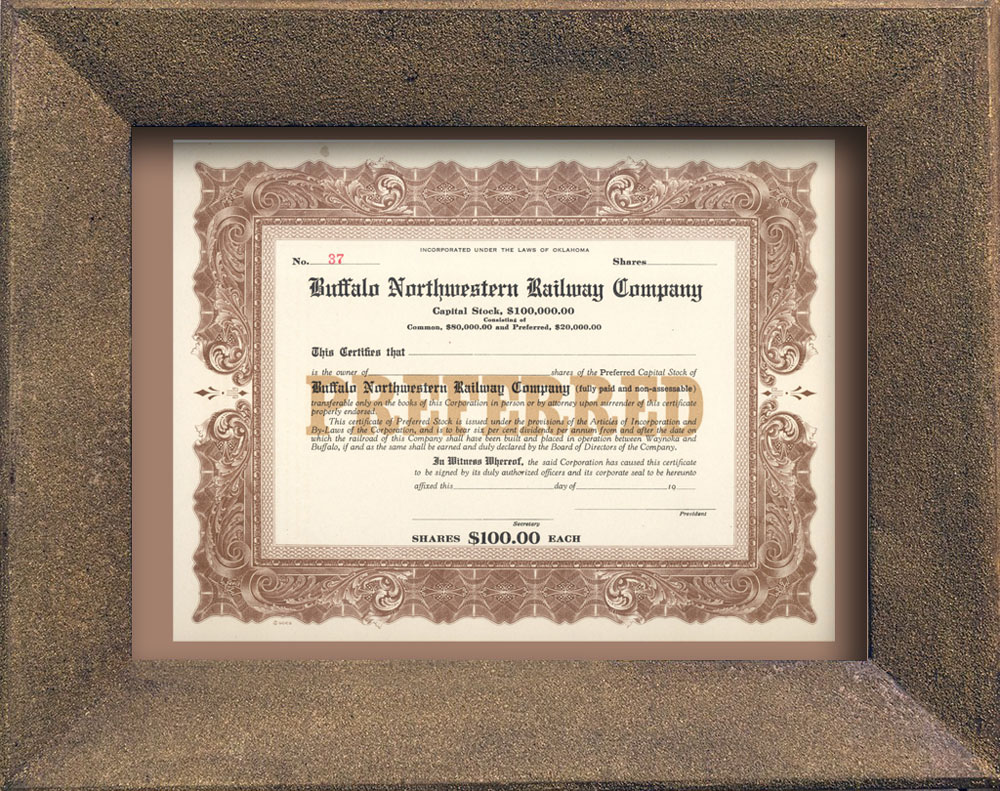
I have occasionally encountered framed certificates at friends' houses. None were scripophily collectors and every certificate was a common one. There was never a need to get into a discussion about display because frames were always more valuable than the certificates inside.
That is not the case with many visitors to this site. Since they are moderately to extremely experienced, I won't need to mince words.
I do NOT advise framing valuable certificates
I understand the desire to have framed evidence of your hobby on your wall. I have a couple framed certificates in my office. If you want to frame a cheapie, throwaway certificate, go ahead.
However, I don't really advise framing unless advanced precautions are taken. My reasons:
- High probability of fading.
- High probability of paper damage.
- Unknown probability of acid migration from ordinary mattes
- Possibility of acid migration from non-archival materials such as tape and backing paper
Numbers of local framers say they use archival framing materials and methods. Sadly, genuinely archival materials are not cheap. If using a local framer, I advise asking more deeply for proof. (See the section on Preservation for more info.)
Why even go through the brain damage, hassling, or arguing details of archival preservation with framers?
Instead, I advise protecting originals by framing copies
Why not make high-dpi scans of certificates and have them professionally printed? If you don't have a scanner, go to a big-box office supply store. Most front-line stores will be able to make excellent scans for you. Take a USB stick with you and they will give you the scan file.
You can also ask the same store to print your scan on appropriate paper. Then, frame that. I have seen framed copies that I had to look very closely to tell they were not originals. When the print fades, and it will, have your big-box store print another copy or scan a different certificate.
Displaying your certificates online
Several of my correspondents have their own private web sites and display their entire collections online for the world to see. Just because they have a web site doesn't mean they will get a lot of traffic, but who cares. By putting images online, the collectors can see their collections easier than ever before. If this sounds appealing, check with a major web company like Godaddy, Wix, Bluehost, Hostgator, Web.com and many others. Search the web for the term "best website builders."
Maybe I'm a Nervous Nellie, and I've never really heard of any major problems, but I want my readers to:
- realize they are taking on certain risks, and
- they will need to take sensible precautions.
Precautions
Avoiding theft. It is a regrettable fact of life that every town on the planet has crooks and villains. Therefore, make your collection hard to find. The best ways to avoid theft are probably the simplest.
- Be anonymous.
- Avoid publishing personal details.
- Avoid offering any details that point toward you.
- Use a screen name or disguised name instead of your own.
- Do NOT display your address.
- Avoid even telling the name of your town or city.
- Store your collection in secure places.
- Safes.
- Bank vaults.
- Secure storage facilities.
- Store large collections in multiple locations so no single loss will be total.
Insurance. See a discussion at Insurance.
Images of your certificates for the web
Your images need to be worth viewing if you want people to view your certificates more than once.
- Dark images are NOT good enough.
- Out-of-focus images are NOT good enough.
- Crooked images are NOT good enough.
- Misshapen images are NOT good enough.
- Uneven lighting is NOT good enough.
- Scans are MUCH better than photographs.
If you don't own a scanner and don't want to buy one, search the web for scanning services in your vicinity. Try UPS Stores and big-box stores like OfficeMax. It will take practice to get good at scanning, so check this website for numerous hints on scanning certificates.
Displaying certificates on the web
Here are ways of presenting images of your certificates on the web. Which appearance do you think will keep viewers coming back to your album?
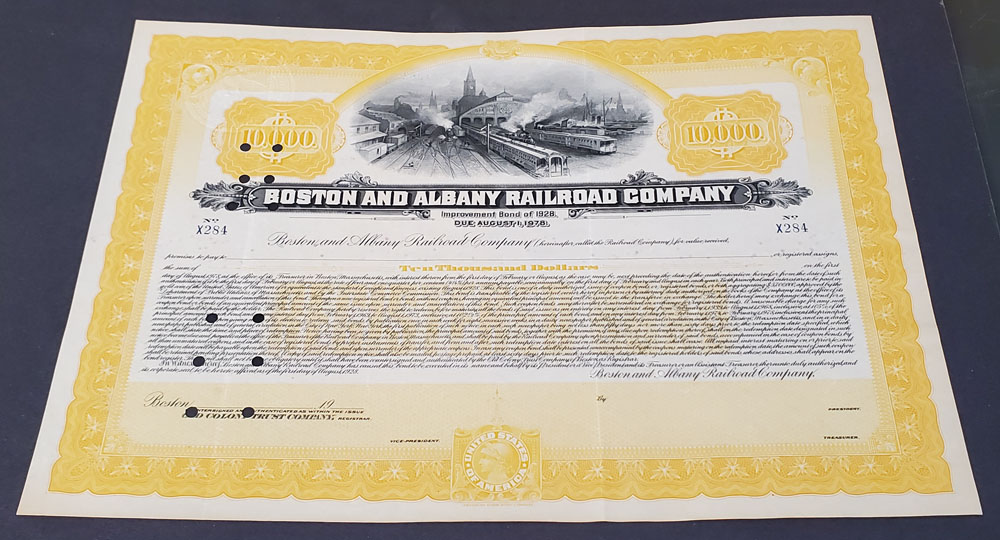
|
Oblique image shot with cellphone camera
- uneven lighting
- distorted shape
|
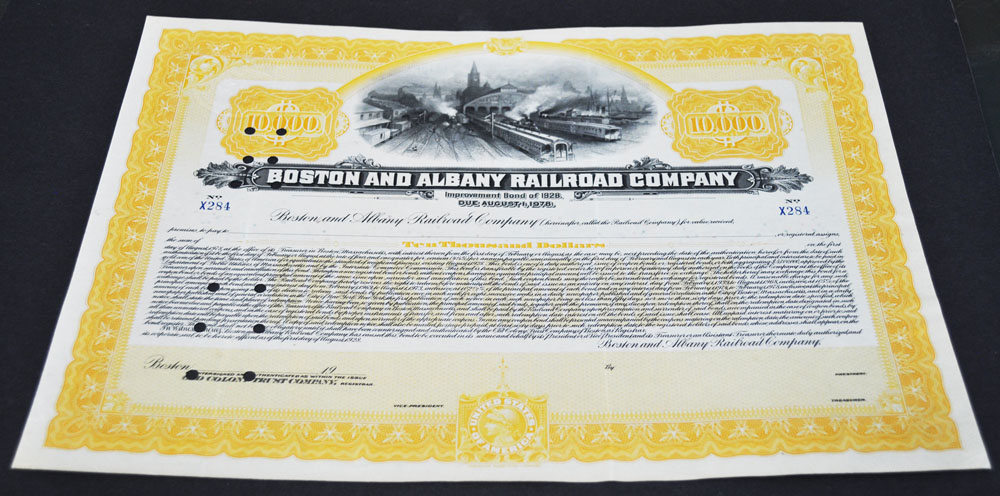
|
Oblique image shot with digital camera
- uneven lighting
- distorted shape
|
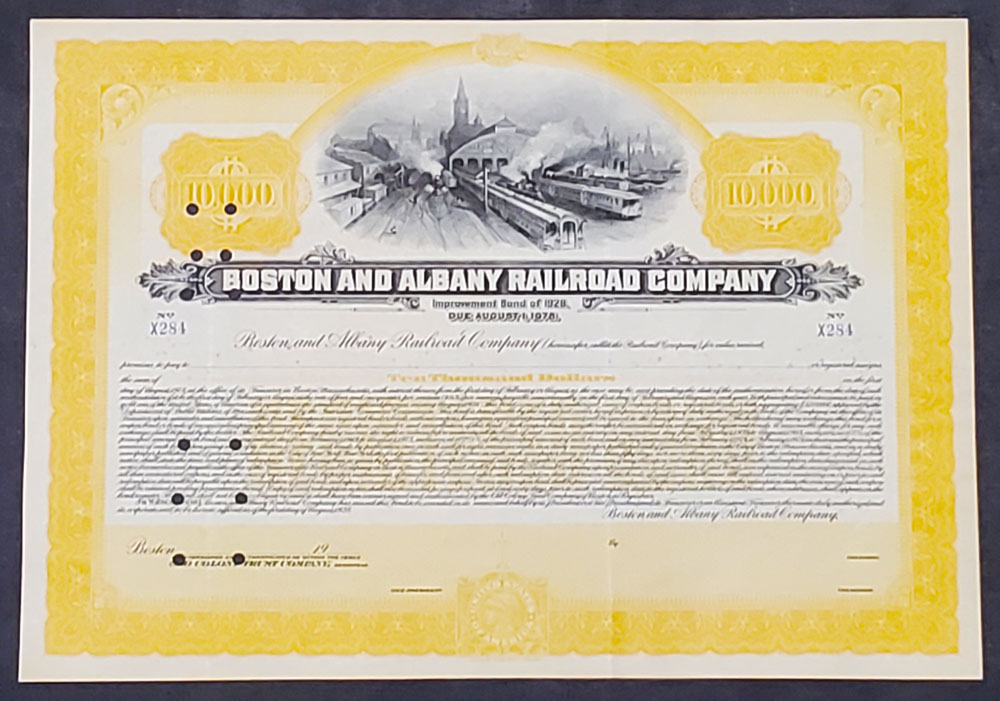
|
Vertical image shot with cellphone camera
- uneven lighting
- some distortion
|
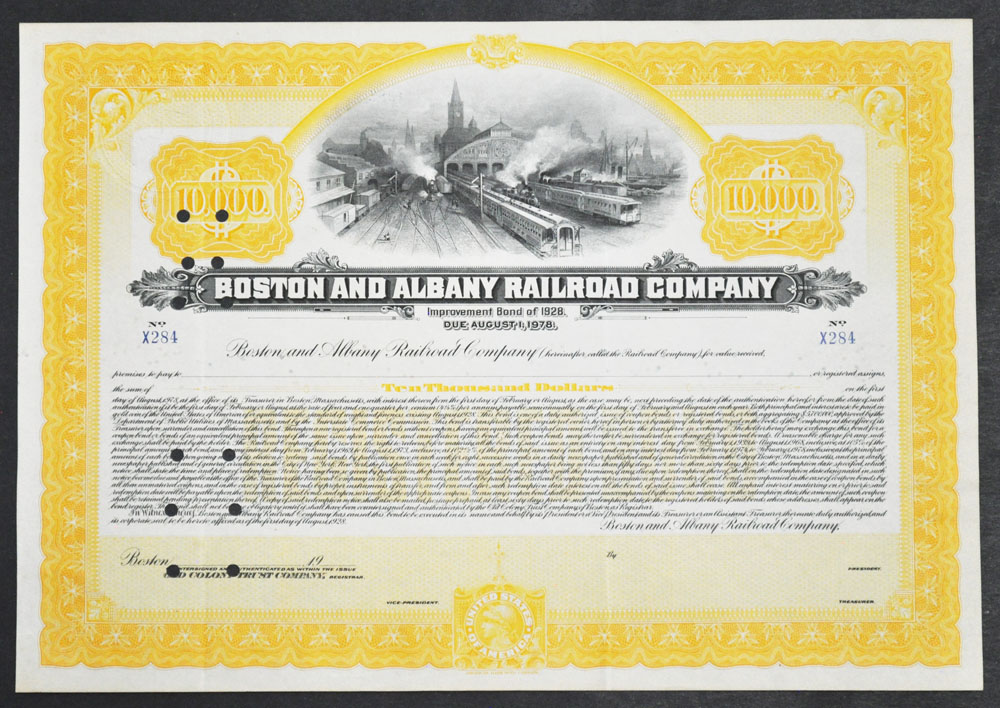
|
Vertical image shot with digital camera
- uneven lighting
- some distortion
|
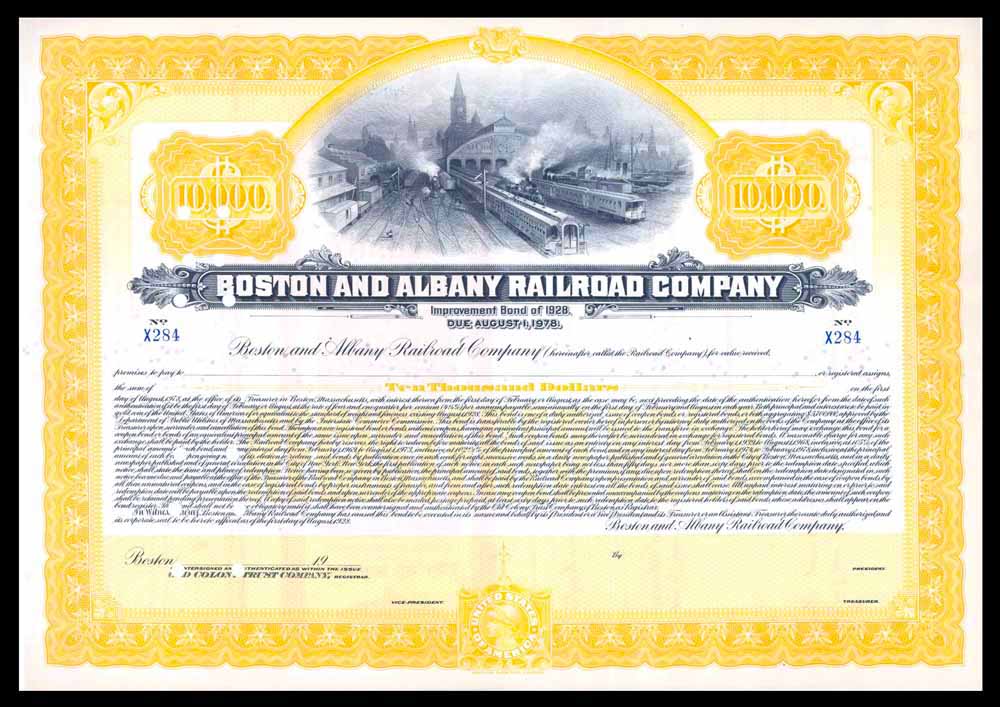
|
Image made with scanner
- even lighting
- no distortion
|
Protecting your imagery
Many collectors are paranoid about people copying their images for use elsewhere on the web. And it is true. If sufficiently good, people WILL steal your images and maybe even your text. And they WON'T give you credit. Regrettably, many people have the ethics of pond scum and that's just the way it is.
While it will take a bit of extra time to make the first one, it is easy to embed a "watermark" in your images with either your name or your logo. Depending on the image program you use, there are no shortages of "how-tos" on the web. It is really quite easy. Only you can answer whether it is worth the effort. And please remember, except for the people you have invited, your site will probably get minimal traffic so theft should be greatly minimized.
Here is an example of a scanned certificate above with an embedded "watermark"
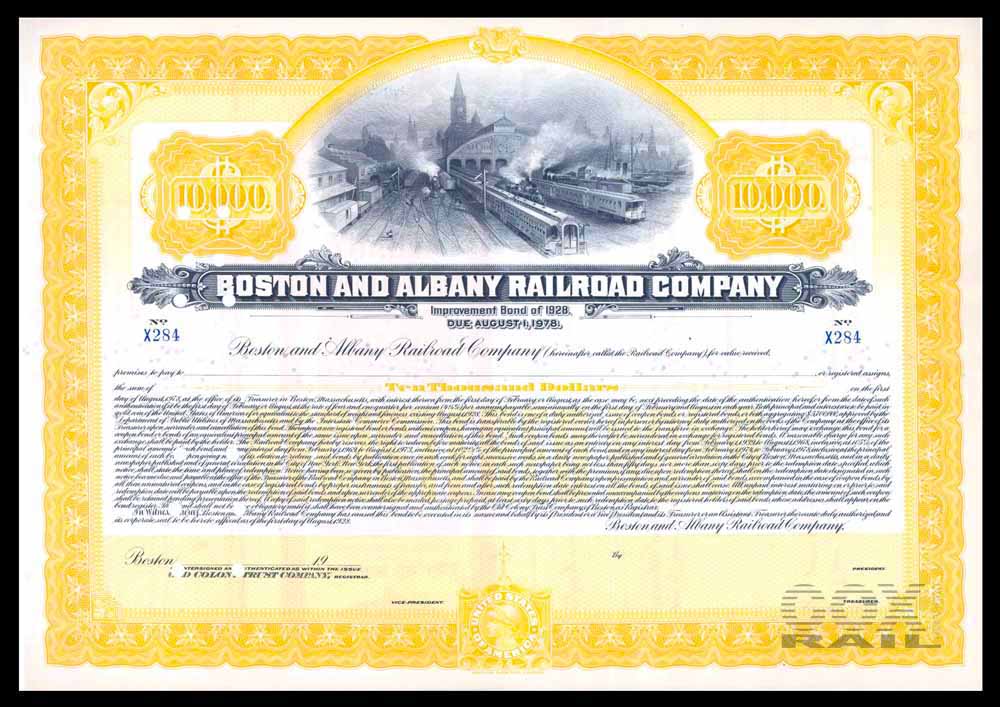
Speaking as someone who has had images, copyrighted text, and copyrighted music used without permission, I am going to suggest: Get over it! At this point in the development of the web, it is a simple truth that people will reuse images without permission and you will probably never know of it. If your pictures are actually good enough for other people to use, it might be better to feel flattered and move on.
Make your images large enough for people to see details
It is still important to keep images small enough so people can see whole certificates. I recommend keeping images around 700–800 pixels wide in order to fit on virtually all monitors without scrolling left and right. With today's monitors, you can probably even go to 1000 pixels wide. It is infinitely better, though, to keep images small enough so visitors will not need to scroll left and right. That is a perfect way to make them give up after looking at only a few images.
One of the tricks you can use with images is to use large images and add special code that makes them "responsive." That is a code word for allowing your images to display full width on wide monitors and shrink when using screens on smaller devices.
Tell stories about your certificates
It is a weird human phenomenon, but people can't walk away from a story, even if they've heard the story countless times. If you have a blog or some manner of telling stories about specific certificates, do so. Ideally, of course, you want your stories to be interesting and well-written.
Again, be vague about locations and people that might indicate who you are and where your collection can be found.